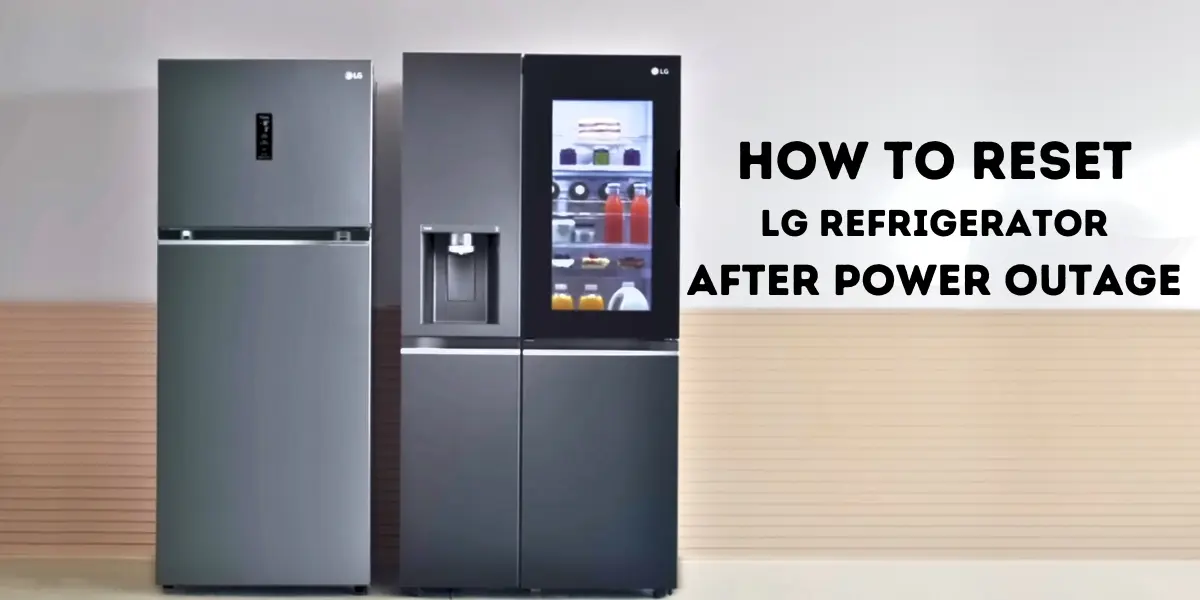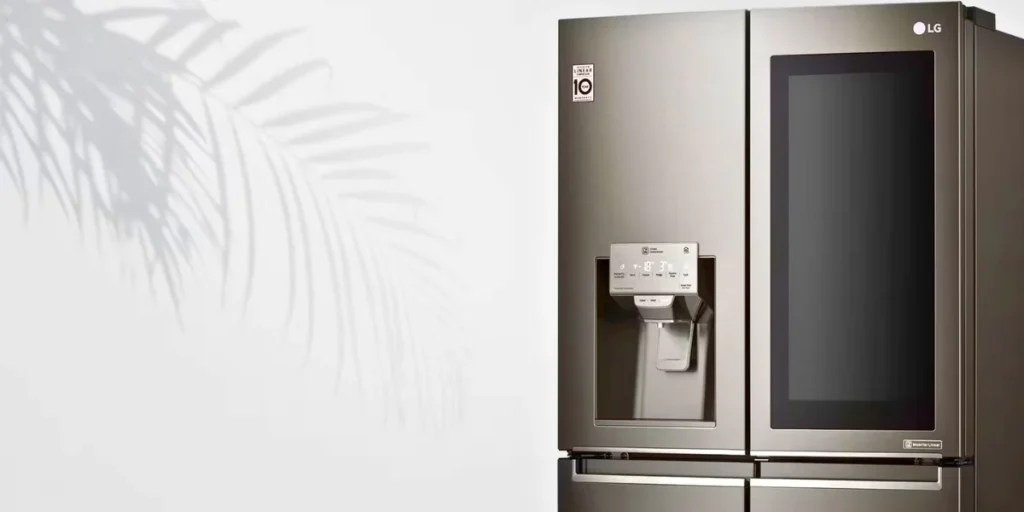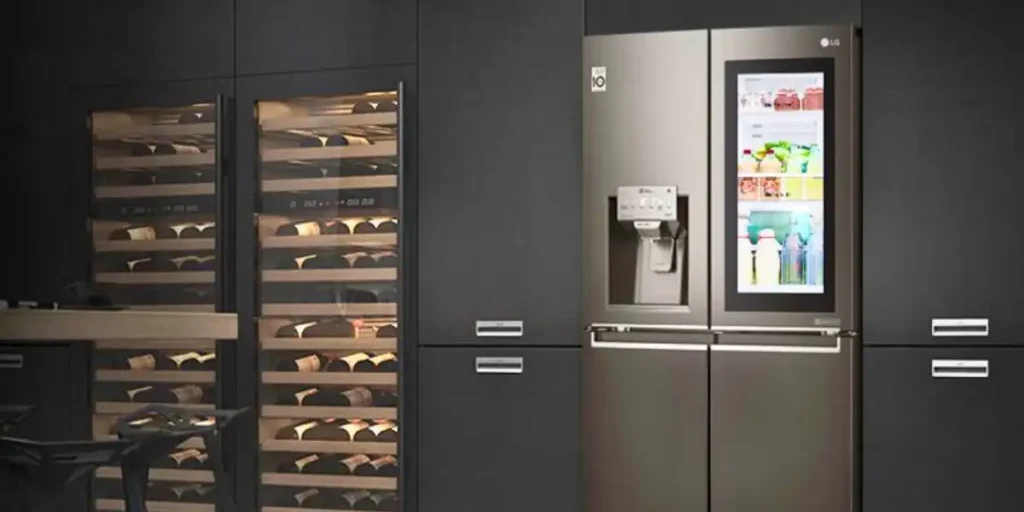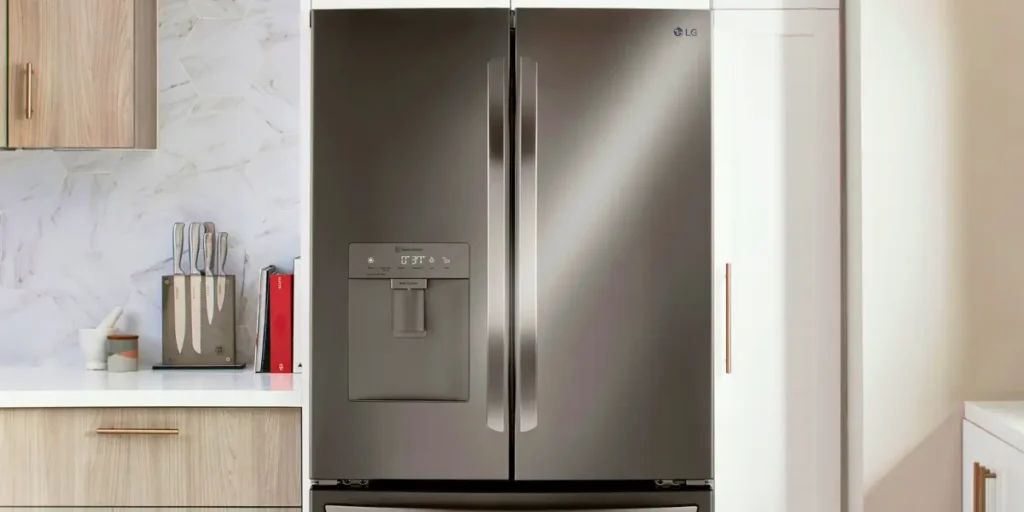How To Reset LG Refrigerator After Power Outage
We may earn affiliate fees for purchases using our links (at no additional cost to you).
Did a sudden power outage leave your LG refrigerator in a frenzy? Fret not! In this post, we’ll guide you on How to Reset LG Refrigerator After Power Outage.
We will reveal simple yet effective steps to reset your refrigerator after a power interruption. No gibberish or lengthy intros here!
Let’s dive straight into the process and get your fridge back up. No more wondering. and running smoothly.

How to Reset LG Refrigerator After Power Outage
The process of resetting an LG refrigerator after a power outage involves a series of simple steps. Let’s dive right in:
Unplug the Refrigerator
To begin the reset process, unplug the refrigerator from the power source. Wait for about 30 seconds. Make sure that any residual power is drained from the appliance.
Reconnect the Refrigerator to the Power
Now, plug the refrigerator back into the power source. You should hear the familiar hum of the fridge starting up.
If not, double-check the power connection and try again.
Reset the Control Panel
Locate the control panel on your LG refrigerator. Look for the “Reset” or “Power” button. Press and hold it for approximately 5 to 10 seconds.
This action will reset the control panel. It will clear any error messages or alarms caused by the power outage.
Adjust Temperature Settings
Once the control panel is reset, check and adjust the temperature settings. Do it according to your preferences.
You can do this by navigating through the control panel menu. Use the designated buttons to do it correctly.
Monitor the Refrigerator
Observe the refrigerator’s performance over the next few hours. Make sure the cooling and freezing functions are working correctly.
If you notice any issues, refer to your refrigerator’s manual. Or contact LG customer support for further assistance.
Safety Precautions Before Resetting Your LG Refrigerator

Before you proceed with resetting your LG refrigerator it’s essential to take some safety precautions. It will protect yourself and the appliance.
Follow these steps carefully to ensure a safe and successful reset:
- Unplug the Refrigerator: Before attempting any reset, unplug the refrigerator from the power source. This prevents any electrical mishaps while you work on the appliance.
- Check the Power Outlet: Inspect the power outlet. Make sure it is in proper working condition. Avoid using damaged or faulty outlets to prevent electrical hazards.
- Wear Safety Gear: For added protection, wear safety gloves. If needed, use safety goggles. These precautions minimize the risk of injury during the process.
- Remove Perishable Items: Empty the refrigerator of all perishable items. Store them in a cool place. That prevents spoilage during the reset.
- Locate the Circuit Breaker: Find the circuit breaker or fuse box. Identify the switch or fuse that controls the refrigerator’s power. Turn off the switch or remove the fuse before proceeding.
- Keep the User Manual Handy: Have your LG refrigerator’s user manual nearby. It contains essential information about resetting procedures specific to your model.
- Allow Time for Stabilization: After the power is restored, wait for at least 5 to 10 minutes. This allows the appliance’s internal systems to stabilize.
- Avoid Water Contact: During the reset, avoid direct contact with water or any liquid around the refrigerator. It prevents electrical accidents.
- Avoid Overloading: Don’t overload the refrigerator with too many items. Excessive weight can damage the internal components during the reset.
- Stay Clear of Moving Parts: Be cautious of any moving parts during the reset process. Keep your hands and tools away from these components.
Follow these safety precautions to ensure a secure environment while resetting the LG refrigerator. Now, you’re all set to proceed with the resetting process.
Remember, your safety is paramount. So take the necessary measures before diving into the reset process.
When and Why You Need to Reset the LG Refrigerator

Resetting your LG refrigerator can be a powerful tool. It can tackle specific issues and ensure optimal performance. Discover when and why you need to perform a reset:
Power Outages or Voltage Fluctuations
When a power outage occurs or experiences voltage fluctuations, the refrigerator may need a reset. It helps the refrigerator to get back on track.
Sudden power interruptions can disrupt the appliance’s normal functionality. A quick reset can bring it back to life.
Technical Glitches and Error Messages
If your LG refrigerator displays error messages or experiences technical glitches, a reset may be the solution. It clears temporary issues and resets the control panel. Often resolving minor malfunctions.
Temperature Control Problems
When your refrigerator fails to maintain the desired temperature, a reset can recalibrate the settings. It restores per cooling.
Ice Maker Troubles
If your LG refrigerator’s ice maker stops working or produces irregular cubes, a reset may address the issue.
Defrosting Issues
Excessive frost buildup in the freezer or improper defrosting can warrant a reset. It ensures smooth operation.
Refrigerator Door Problems
If the refrigerator doors don’t close properly, a reset may realign the components. It resolves the problem.
Refrigerator Not Responding
In some cases, your LG refrigerator becomes unresponsive to user commands. A reset is necessary to kick start its operation.
After Cleaning or Maintenance
Performing maintenance or cleaning the refrigerator’s interior may require a reset. That ensures proper functioning afterward.
When Seeking to Optimize Performance
Occasionally, a proactive reset can optimize your refrigerator’s performance. It helps the refrigerator to run smoothly.
Preventive Measure
Some users choose to reset LG refrigerators periodically as a preventive measure. It avoids potential issues and keeps the appliance in top condition.
Common Issues and Troubleshooting Tips for LG Refrigerator
Is your LG refrigerator acting up? Don’t worry; here are some common issues and troubleshooting tips to get it back on track. Let’s dive into the perplexing world of refrigerator glitches and troubleshooting steps.
Refrigerator Not Cooling Properly
- Check the Temperature Settings: Ensure the temperature settings are appropriate for both the fridge and freezer compartments.
- Clean the Condenser Coils: Dust and debris can hinder cooling efficiency. Clean the condenser coils at the back or bottom of the refrigerator.
- Verify the Door Seals: Faulty door seals can cause air leaks. Check for any gaps or damage and replace them if necessary.
Excessive Frost Buildup in Freezer
- Check the Door Seal: A worn-out or damaged door seal can lead to frost buildup. Replace it if needed.
- Monitor Defrost Timer: A malfunctioning defrost timer may cause irregular defrosting. Test or replace the timer if necessary.
- Defrost Manually: If frost accumulates, manually defrost the freezer. It eliminates excess ice.
Strange Noises from the Refrigerator

- Level the Refrigerator: Ensure the refrigerator is level on the floor. It will prevent vibrations and odd noises.
- Tighten Components: Check and tighten any loose components like handles, shelves, or drawers.
- Inspect the Compressor: If the noise originates from the compressor, seek professional help. It may need repair.
Water Leaking
- Clear Drain Tube: A clogged drain tube can lead to water leakage. Clean it to allow proper drainage.
- Inspect the Water Line: Check the water line for any leaks or damage. Replace if needed.
- Check Water Filter: A damaged water filter can cause leaks. Replace it regularly to avoid issues.
Ice Maker Malfunctions
- Verify Water Supply: Ensure the water supply line is properly connected and delivering water to the ice maker.
- Reset Ice Maker: Follow the user manual to reset the ice maker and troubleshoot any glitches.
- Clean Ice Maker Components: Remove any ice or debris blocking the ice maker’s components.
Fridge Runs Constantly
- Adjust Temperature Settings: Lower the temperature settings if the refrigerator runs excessively.
- Check for Overloading: Avoid overloading the refrigerator with too many items.
- Clean Condenser Coils: Dusty coils can cause the fridge to run more than necessary. Clean them regularly.
Unusual Odors Inside the Fridge
- Clean the Interior: Regularly clean the interior to remove spills and food residues. It can cause odors.
- Use Baking Soda: Place an open box of baking soda in the fridge. It will absorb odors.
- Check for Spoiled Food: Remove any spoiled food. That can cause an unpleasant smell.
Address these common issues and follow the troubleshooting tips to maintain the optimal performance of the refrigerator.
FAQs
Can the refrigerator be damaged by a power outage?
How long does it take for the refrigerator to reset after a power outage?
Do I need any special tools or equipment to reset the refrigerator?
Do I need to reset the refrigerator if the power outage was brief?
However, if you notice any irregularities in its operation, a reset might still be beneficial.
Will resetting the refrigerator delete any stored settings?
Conclusion
Congratulations! You’ve successfully learned how to reset LG refrigerator after power outage. By following these straightforward steps you can now ensure smooth that your fridge’s functionality of refrigerator.
Power outages can be inconvenient but this guide helps you to resolve the issue. So, next time your fridge falters, you know precisely what to do.
Burst through the reset process like a pro. Keep your refrigerator cooling like never before.
